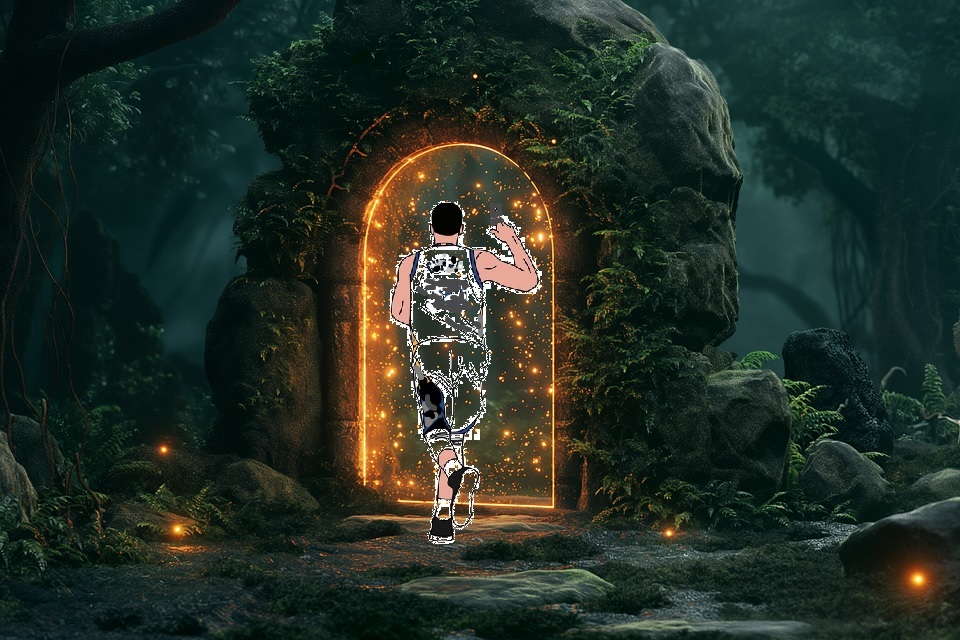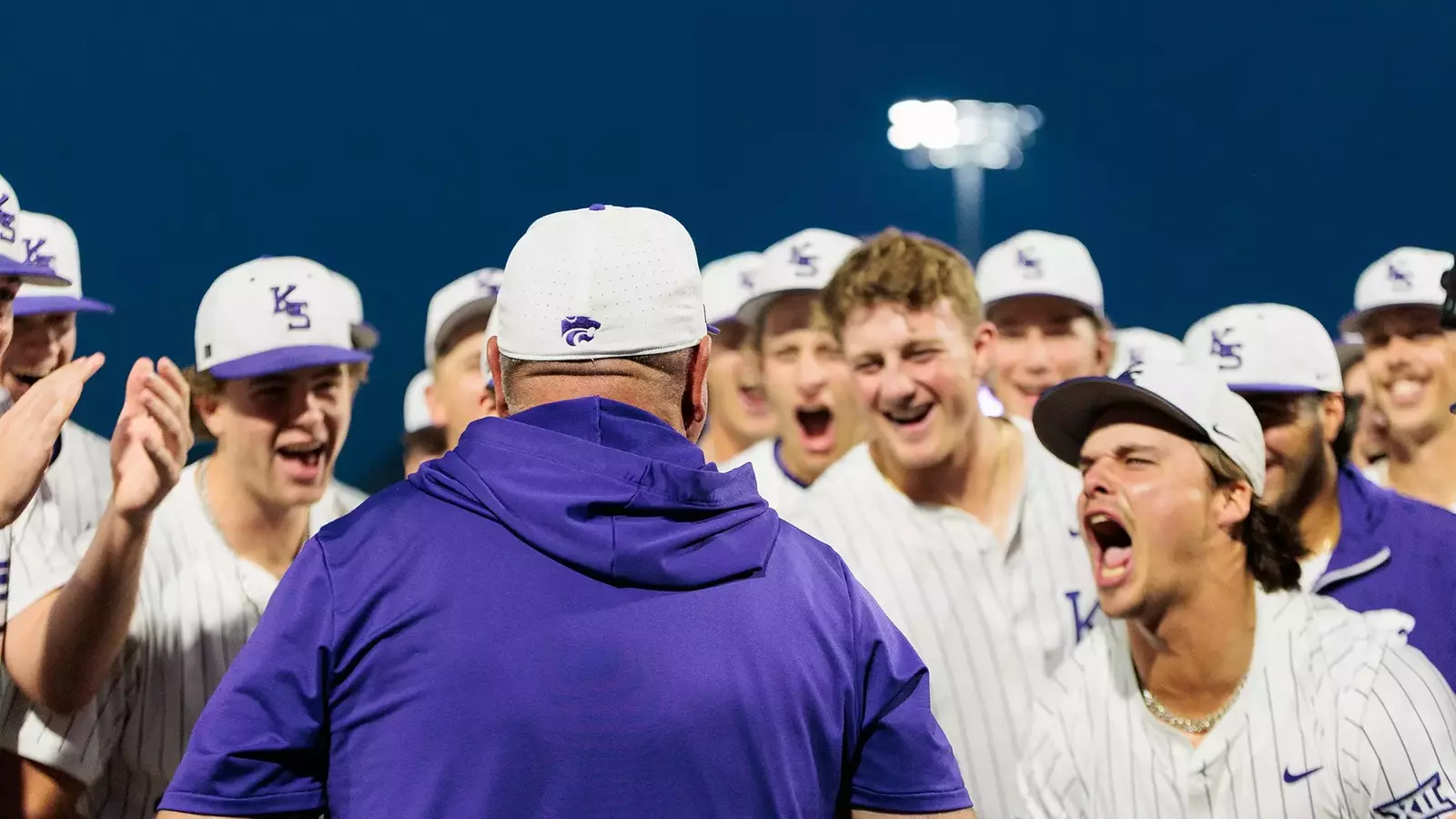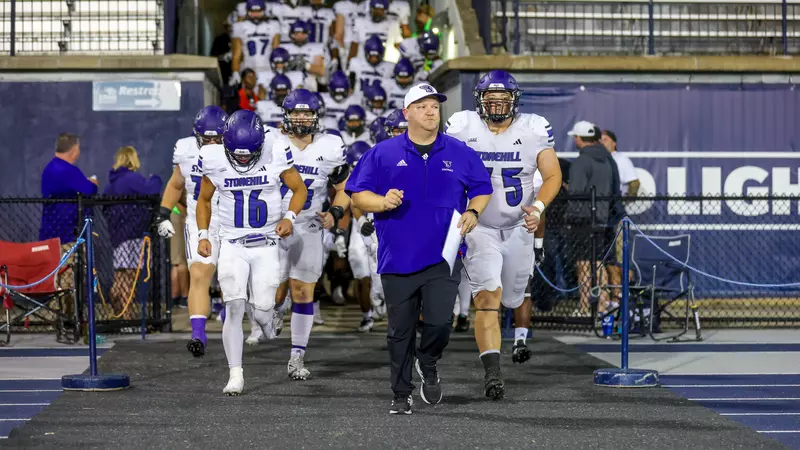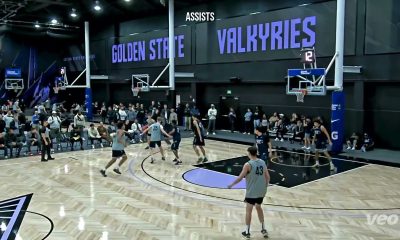By:
D. Scott Fritchen
All eyes turn to Arlington, Texas.
Kansas State ended its Big 12 Conference season with a 9-5 win at Cincinnati, giving the Wildcats a school-record 17 conference wins, and K-State, 31-23, currently own a 35 RPI and appear in a good position for a berth in the NCAA Regionals, which will be revealed on May 26.
But for now, K-State turns its attention to the Big 12 Baseball Championship at Globe Life Field in Arlington, starting on Wednesday. No. 6 seed K-State, 17-13, will face No. 11 Houston, 12-17, at 8:00 p.m. on Wednesday. The K-State/Houston winner will move on to play No. 3 seed TCU on Thursday at 7:30 p.m. The games will be shown on ESPN2 and ESPN+.
The 2025 Big 12 Championship, which features an increase to 12 teams, will be played in a single-elimination format for the first time.
K-State Sports Extra’s D. Scott Fritchen spoke with longtime K-State baseball broadcasters Brian Smoller and Matt Walters about the Wildcats, their season, and beyond.
D. Scott Fritchen: Every team is different. In your eyes, what is most unique about this 2025 K-State baseball team?
Brian Smoller: Good question. They are a competitive bunch. They’re so competitive at times that when they went through a slow part or low part of the season, they’re so competitive that they got down on themselves. Emotion in baseball is never a good thing. But for a team that’s relatively new with a lot of first-year guys that have transferred in, they’re remarkably close. I don’t know that I’ve been around a team that’s been this close to each other with a group of first-year players or transfers as this group is. They’re pretty tight. They do it all together. When they’re all hot, they’re all hot together. They’re on the upswing so that’s a good thing.
Matt Walters: The first thing that comes to mind is K-State has a large group of guys from the portal that have shown up in Manhattan from smaller Division I schools and have produced the most home runs in a season in school history and brought the threat of the home run to the plate in so many spots in the order.

Fritchen: What are your biggest takeaways from the Cincinnati series?
Smoller: The big takeaway is that the K-State bullpen stepped up. The bullpen had a 1.08 ERA. The development and performance of Tanner Duke and Ty Ruhl and Tazwell Butler, that gives you a very encouraging sign going into the postseason. There was one question mark going into Cincinnati and that was who they were going throw behind their starters to get some consistency in the bullpen. Some of the matchups on paper actually favored K-State’s starting pitching, and it actually ended up to be the opposite. Lincoln Sheffield was OK on Saturday but the bullpen being as good as it was is a great sign for K-State going into the post season.
Walters: Getting out with a win. I was concerned that if K-State got swept at Cincinnati that it might put K-State in harm’s way regarding the NCAA Tournament. Thursday was a game K-State could’ve easily won and things didn’t go well Friday, and to bounce back and jump on Cincinnati early, set a tone, and finish it off with a 9-5 win was huge. That meant that K-State in the last nine games of the regular season, the last nine conference games, went 5-4 and finished above .500, which sets a much better tone than going 4-5 to finish off the regular season.
Fritchen: What did this K-State team show you in its last home series against No. 12 West Virginia?
Smoller: Faced with a must-win series against a team that was playing pretty well, K-State showed great resolve and had a never-say-die attitude, and of course, the Friday night game was one of the greatest wins in that stadium’s history, coming back from six in the ninth. It just shows you how tight this team is that they have great belief in each other and in their coaches. It’s fun when teams like that, that try that hard and care that much, when it actually pays off and you get wins like that. We saw great performances from Seth Dardar and Keegan O’Connor and all the guys who’ve hit so well at home, and then the pitching performances that the Cats got. It’s fun. It’s a great ride as a broadcaster and a great ride as a fan to see teams that care have it all pay off. That was the culmination of West Virginia, and it really cemented their place in the postseason.
Walters: This has been one of the most special teams at home I can ever recall. This is a team that’s a different team at home for whatever reason. They believe they can come from behind and score and do the necessary things to win games, and against West Virginia they showed that. It’s not the best of habits to fall behind by 5, 6 or 7 runs against a team like West Virginia, who’s had an incredible year. But to be able to move the line, to stretch some things together, and to produce some home runs in there to eradicate a big deficit in the first ballgame of the series, and then to have your heart ripped out late in the ballgame in the Sunday contest and to hang a seven spot on the board screams volumes about this team. They only lost three times in Manhattan all year, which is a spectacular accomplishment.
Fritchen: What most makes this K-State squad a dangerous team heading into the Big 12 Tournament?
Smoller: One of the positives is K-State tries to play a game in Globe Life early in the season, so the surroundings aren’t new. Teams get in there and they’re wowed by the Major League ballpark and the aura of being in the home of the Rangers, and they’re in their locker room, and in their cages. Everything is first rate. So, some of that can kind of distract you from the mission at hand. I don’t think K-State will be distracted. They know they’ll be playing next week. They go in and they’re playing some teams that they’ve played before, and they’ve won in that park already this year. They’re a pretty confident group going into Arlington and feel like they have a chance to make some noise.
Walters: If most everybody is clicking and this team is on the same page, not just in the Big 12 Tournament but in the postseason, it can be very dangerous because of the long-ball potential really anywhere in the order, once again. It’s a team that if you make mistakes, they can make you pay in a big way. If K-State is getting guys on base at the top of the order and guys are driving them in and they’re able to run a little bit and just playing the game like they did at home much of the year, they’re going to be a load to beat. K-State just has to go about its business, not think too much, just play the game. You’ve won 30-plus games and are going to be the field of 64. Just be smart, play smart, do the right thing, and you’re going to have a chance to win some ballgames.

Fritchen: In your mind, why is K-State a NCAA Regional team this year?
Smoller: The schedule has played out exactly as you’d hoped if you’re K-State. They’ve won enough games away from home and have beaten good teams enough that they’re RPI is a great strength. Unfortunately, in college baseball, you don’t have a NET ranking or a College Football Playoff Committee that evaluates teams based on metrics beyond the RPI. College baseball is still trying to figure that out. They have a committee that meets but the RPI is the main metric, and until that changes, you have to figure out how to get the RPI in your favor. Pete Hughes and his staff have done a great job of scheduling in a way that allows K-State to get a high RPI. They’re sitting at 35 in the RPI, and the strength of schedule is really good and they have 31 wins and a number of Quad 1 and Quad 2 wins and zero Quad 4 losses. That resonates as good as it gets. They’ll be a No. 3 seed and go somewhere, but as we saw last year, that makes them a dangerous team.
Walters: The fact that they went 17-13 in the Big 12 and had some very quality non-conference wins helped immensely. This is a team that, when it plays with an edge, is a much better baseball team. For whatever reason, this team has struggled on the road, but what’s done is done, you’ve earned your spot into the field of 64, and now you have to prove you belong in the field of 64, and I think this team can. We’ve talked a lot about offense, but the pitching has to uphold its end of the bargain, and there are some guys who have to do a little bit more. K-State maybe needs a little longer starts, and we’ll see if Coach Hughes moves anything around, but pitching and defense has to help out the offense. If K-State plays all three aspects well, they have a chance to rattle some cages, but it can’t just be an offensive postseason for K-State because they’re going to run into teams that are equally if not better offensively. The pitching and defense need to carry some mail here in the postseason.
Fritchen: How do you think the start of the season against No. 6 North Carolina, No. 5 Arkansas, Michigan, No. 22 TCU and No. 2 LSU most benefited this K-State team from the outset?
Smoller: Not only did they play those teams and were competitive, but they won most of those games and then had a chance to win against North Carolina and should’ve won the game against LSU. That showed that this team, they have this belief, and they talk about it all the time, that when they play well, they’re as good as anybody in the country. That’s what separates this team perhaps from some other K-State teams. The talent on this team was evident in those early weeks. We were in Arlington watching the team take batting practice, and I shook my head and told the coaches, “This is an embarrassment of riches. I don’t remember a team that is as talented just individually talented as this team.” They said, “Yeah, we’re pretty excited about this team. We just don’t know where it’s going to go yet.” Every team goes through its ups and downs, but when this team is on, they have the talent to compete with anybody in the country.
Walters: It showed them what they can do and what their potential is. I’m hoping this baseball team remembers that and remembers how it played in Frisco and plays that way now because nobody else is going to give K-State much of a chance to get out of a regional and get to super regional like they did last year. So, if you just play smart baseball, do the right things, move the guy in front of you, and do your part as a player, and hold up your end of the bargain, I think K-State very easily could get to a super regional. But it’s going to take a collective effort. From what happened in that very first weekend and what happened in Arlington and Frisco, that struck an early fire in this baseball team, and I hope they can rekindle it in Arlington and wherever they land in the NCAA Tournament, because this team has the potential to be very, very dangerous, and one you don’t want to play.

Fritchen: What do you consider to be the biggest strengths of this K-State team?
Smoller: Offensively, I think that’s where it starts. The three things that Pete Hughes loves to talk about are home runs, walks and stolen bases. When they’re getting on the base or hitting home runs, they’re really hard to beat. We saw it in the Cincinnati game on Saturday. Cincinnati had a lot of momentum from the first two games of the series, and then it’s their Senior Day and they have a very large and experienced senior class, and K-State just battered them in the first three innings, put up nine runs, and that game was effectively over at that point. They can suck the life out of another team because of the threat of a long ball up and down the lineup, and right now the pitching – especially in the bullpen – is becoming a strength. This is kind of what happened last year. K-State went into the postseason and found some success with starters but their bullpen really kind of rounded into form. That’s kind of following the same path, and it gets you excited about what this team could do.
Walters: There’ve been numerous times this year when this team at the plate is going the opposite direction. When they’re hitting the opposite way, this team is that much better. Keegan O’Connor and Seth Dardar and AJ Evasco and Shintaro Inoue — when they’re letting the ball get a little deep and they go the opposite direction, that means you’re doing really good things at the plate. To me, that’s been one of the most impressive things about this squad is the ability to go to the opposite field with power.
Fritchen: What have been the biggest challenges for this K-State team?
Smoller: K-State is the only team in the Big 12 that has had the same starting rotation for every conference game. That’s a luxury that not everybody else can have, but it also means you have some guys who are maybe a little bit tired. Pete Hughes pointed that out after the Saturday start by Michael Quevedo this weekend, that he could be fatigued having thrown this many innings and in this many games, and in this many high-pressure situations. You have some depth in the bullpen to cover those guys. But starting pitching is the one area where they’re going to have to get some guys to step up the next couple weeks.
Walters: Winning on the road and finding the right mindset on the road. To me, when you play on the road, you have to play with a chip on your shoulder, because the world is against you. I don’t know that this team did that enough this year. You always have to be careful of the sweep, and I know it was highly disappointing to get swept in Stillwater and especially to get swept in Lawrence. Now when you get to the NCAA Tournament, you’ll likely be playing a top seed in its own ballpark and you have to be able to block everything out, believe in the guy next to you defensively, and the guy hitting behind you and in front of you in the order, and believe in the guys on the mound, and you have to go take it like K-State did last year in Fayetteville because they’re not going to give it to you.

Fritchen: For K-State fans who might see the Wildcats in action for the first time in the next couple weeks, who are some MVPs on this squad that fans should know about?
Smoller: I’d start with David Bishop, who is an unspoken MVP. We talked with him about two weeks ago about this team’s knack after losing to BYU and coming back so strongly and just being able to bounce back, and he mentioned that he had taken on a little bit more of a leadership role and a vocal role. I think the leadership role on this team is a really big strength, and he is one of those key guys. For a guy who never in his career has really been a big hitter, as far as putting up eye-popping numbers, he’s having a great finish. He’s playing outstanding baseball, had the three-run home run here the other day, and you can just see him taking on more of a captain role for K-State. He just bleeds purple. He’s definitely a guy to watch. He’s helped lengthen the lineup quite a bit.
Keegan O’Connor has put up All-Big 12 First Team numbers and is one home run shy of breaking the school record. He’s another guy K-State can really lean on. Truthfully, there are probably five or six who are playing outstanding baseball here down the stretch, and that’s what makes them so dangerous. It’s really not one guy you can focus on because as soon as I mention those two players, I’m thinking of three others.
Walters: To have guys come into the program from lower Division I programs and produce like some of the studs in big Division I programs has been beyond rewarding. Keegan O’Connor, Seth Dardar, Shintaro Inoue. A guy we haven’t talked about enough is David Bishop. You look at his five-RBI game on Saturday, and he’s a rock at first base and he’s just been incredible down the stretch. There are so many other guys, too, but that’s where you start because if you go back and look at it, the fact K-State lost the entire middle of its defense and the fact that you win 30-plus games again, finish sixth in the Big 12, and go to the NCAA Tournament again, that speaks volumes. You don’t just lose your catcher, your shortstop, your second baseman and your center fielder and have that kind of success the next year.
Fritchen: What can you say about the job Pete Hughes and his staff have done in Hughes’ seventh season as K-State head coach?
Smoller: I can’t say enough about Pete. First of all, he’s just a great guy to be around. Having done this for 25-plus years now, there are few coaches that make me laugh harder than Pete Hughes. He is just hilarious, and he’s always got great one-liners and keeps the guys loose, keeps the guys accountable, and he does a good job of delivering the message of what they need to do for each game. He relies on analytics and on his staff quite a bit, but he does a good job balancing that with good common sense. He’s one win shy of 200 in his career at K-State, making him the fastest coach to 200 wins in school history based on the number of games. He’s every bit deserving of that. He and his staff are fantastic. It really shows that even at K-State, if you have a coaching staff that’s completely aligned in the mission and in knowing exactly who you want to recruit and who your identity is as a team, and you go and recruit to that and stay true to that, and you work as a staff and you’re all on the same page, you can really do some special things.
Walters: With the incredible turnover compared to 2024, Coach Hughes and the entire staff deserve a big pat on the back, because there was no Kaelen Culpepper or Brady Day and there weren’t the name players, so to speak, and the coaches were able to get this team to believe early on, and when this team played with that chip on its shoulder and played without thinking too much and carefree and with that heart and passion, that’s what you have to do. This is a team that, after getting swept at Oklahoma State or at KU, could’ve gone the wrong way, but this team has stayed the course. It hasn’t produced a 15-game winning streak or a nine-game losing streak. There’s been a level of consistency, and now they have to turn that up a notch as we look to the postseason.
































































